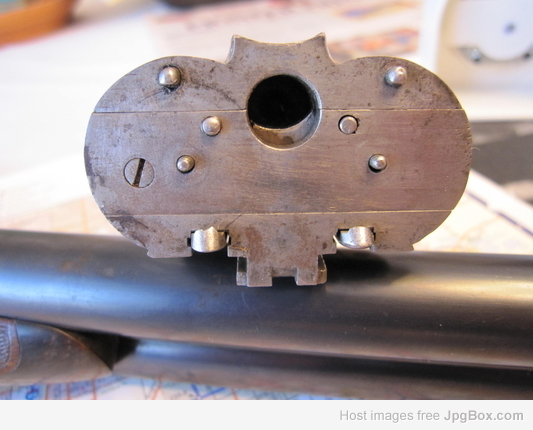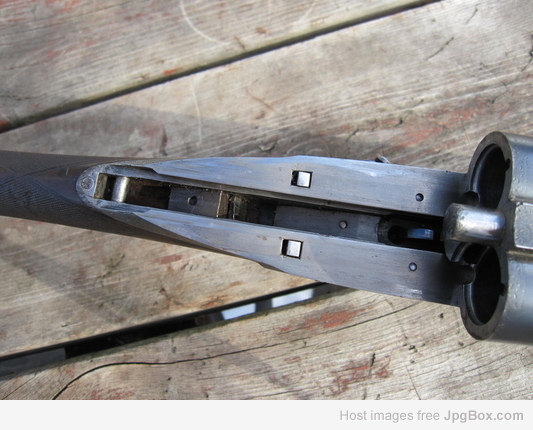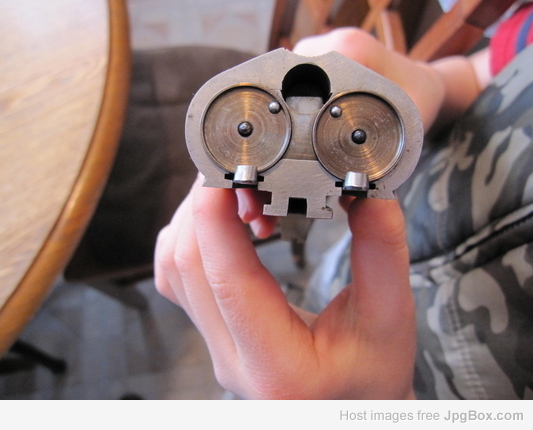Good Lord. The more I look, the worse it gets:

This is a view of the removed breech block, with the opening key closed. It shows the rising bite that engages an extension on the barrels, and it should NOT be a perfect half moon shape. It is, because a piece is rather neatly sheared off, in the exact shape as the extension on the barrels. The bite is making a bit of contact with the extension, as someone added a bit of braze to the bottom, to force it further up into the extension on the barrels.
However, when the clever devil who did that little piece of re-engineering tried to fire the gun, I'm pretty sure he did this:

This view shows the mortised plate that is fitted into the lower action, which forms a perfect wedge when the action of a Darne is completely closed. It is just in front of the piece of steel with the hole in the center of it. However, the braze repair kept the action from closing all the way, and the stress of firing, either the first time it was fired, or, sometime after that, broke the plate right off.
My friend bought this gun for $325, perhaps a decade ago, from someone who had fired it a few times, but, reported the breech was "loose" when the gun was fired. It was purchased as a wall hanger, and hasn't been fired since, Thank God. If you look at the front of the breech photo, you can just make out a crack starting at the corner of the rail the breech slides back and forth on.
This view, of a later V model breech, shows what the rising bite is supposed to look like:

Be careful out there.
Best,
Ted